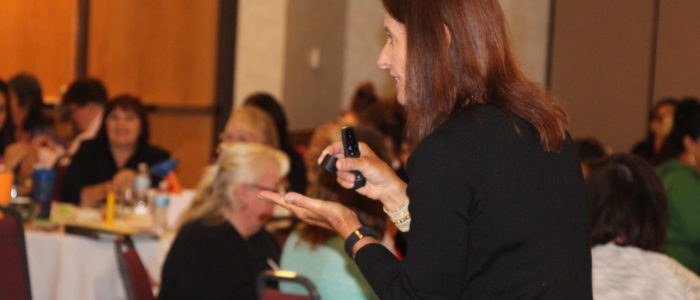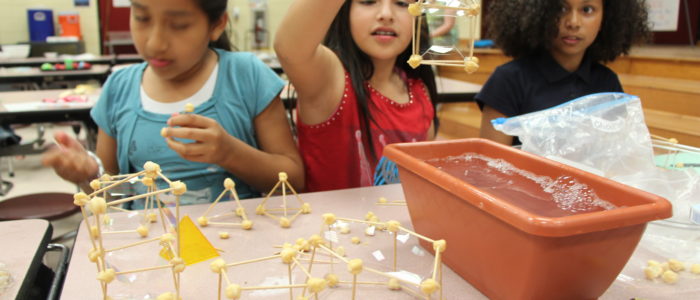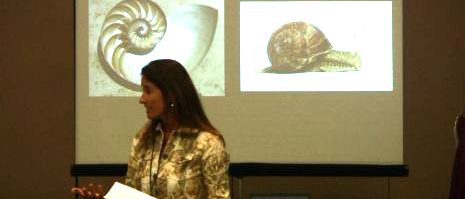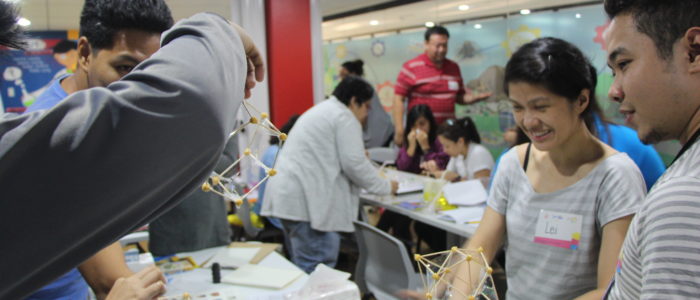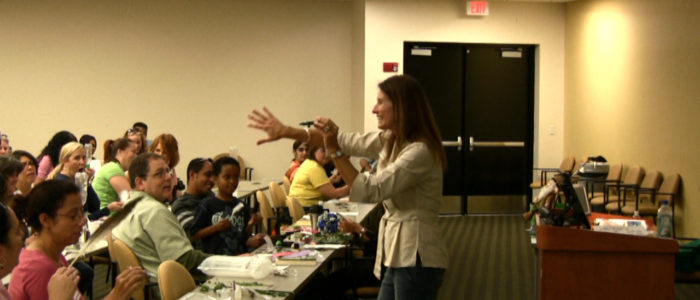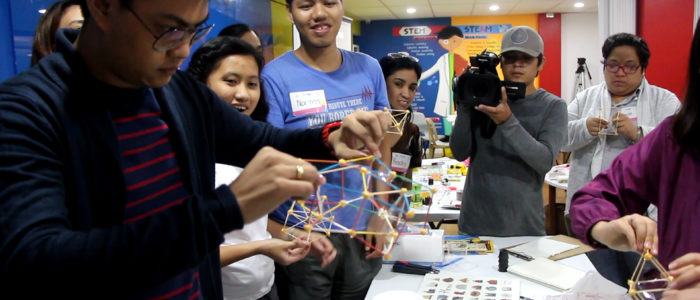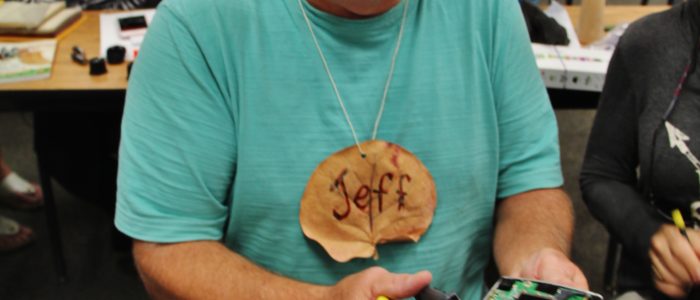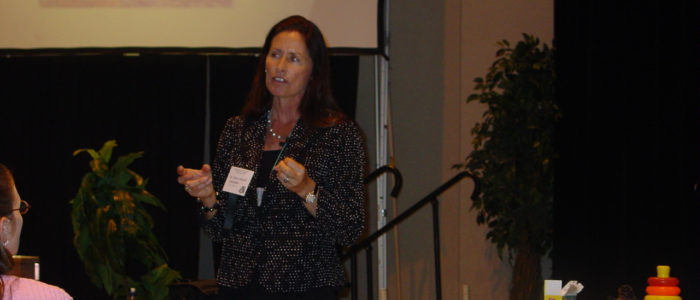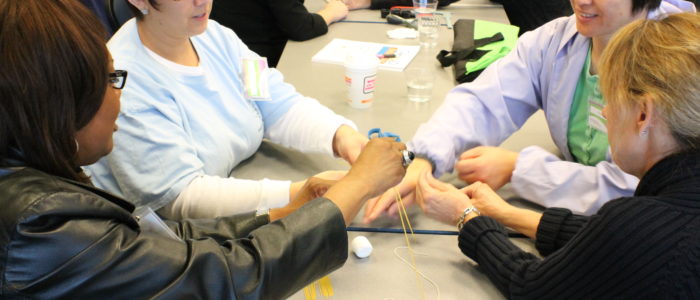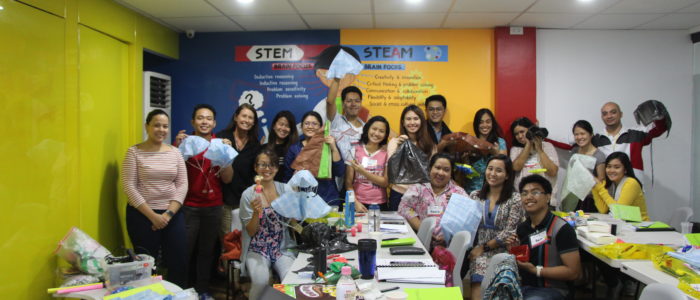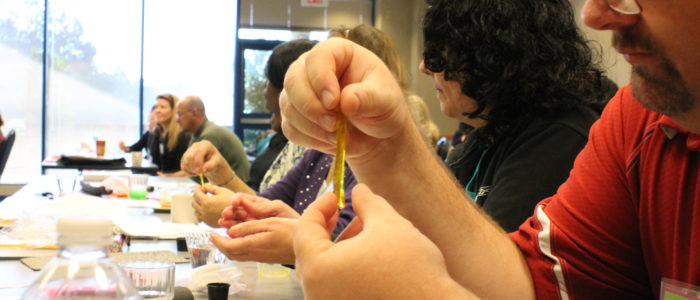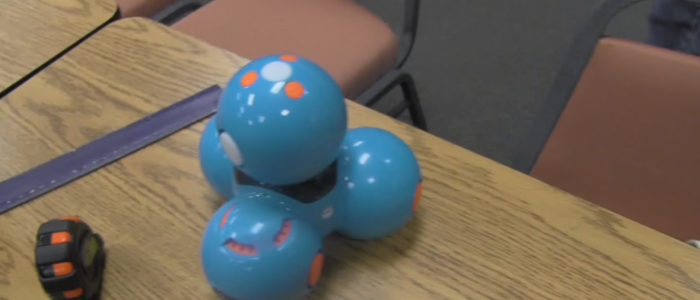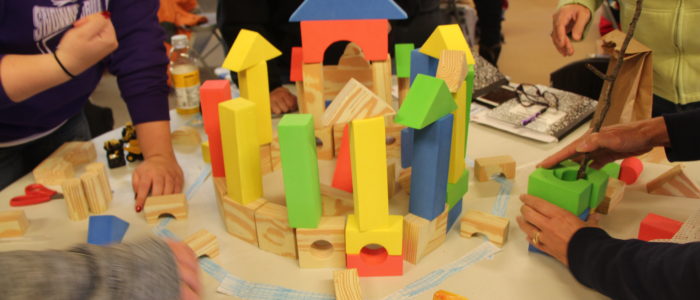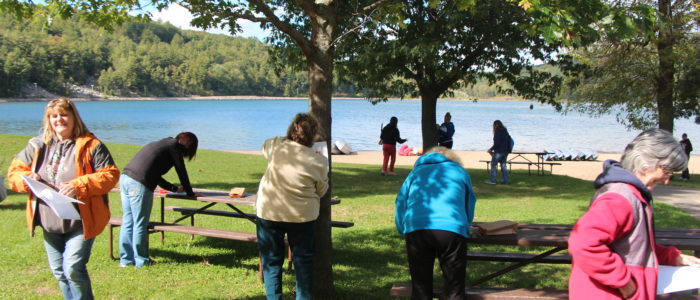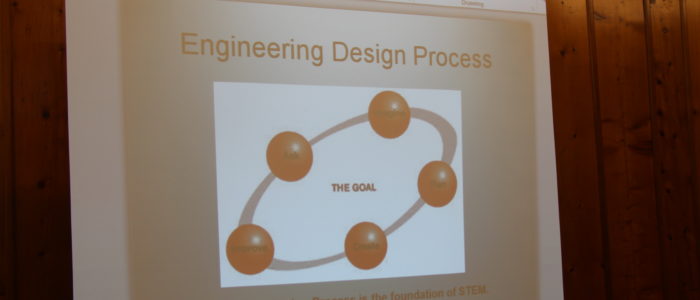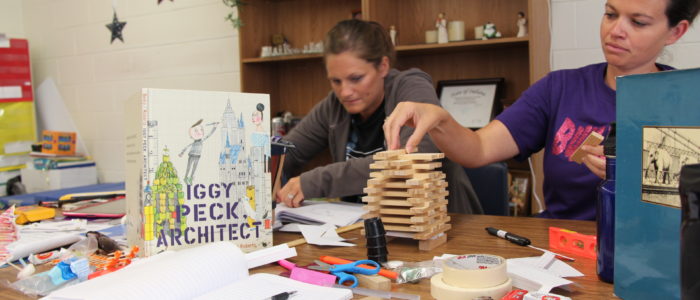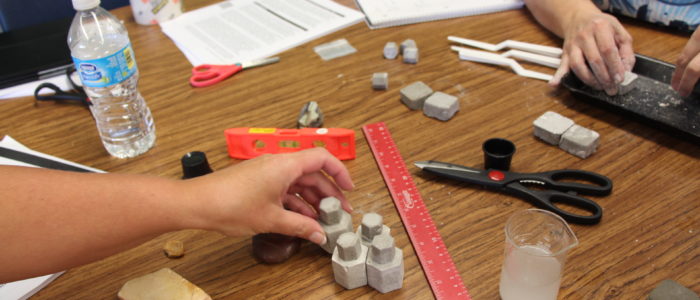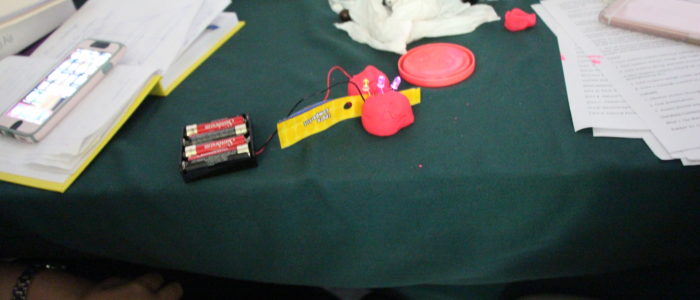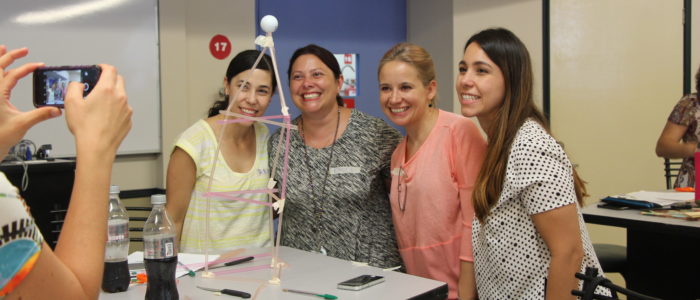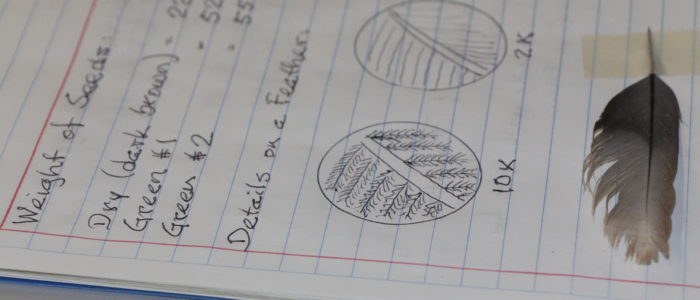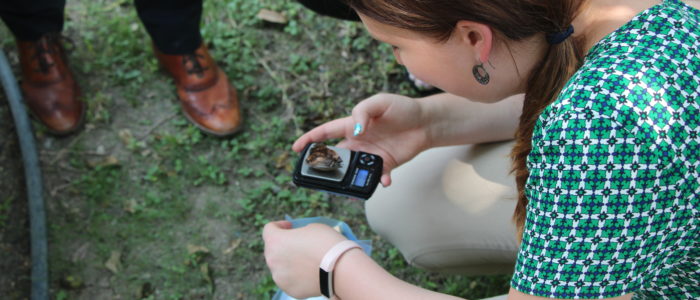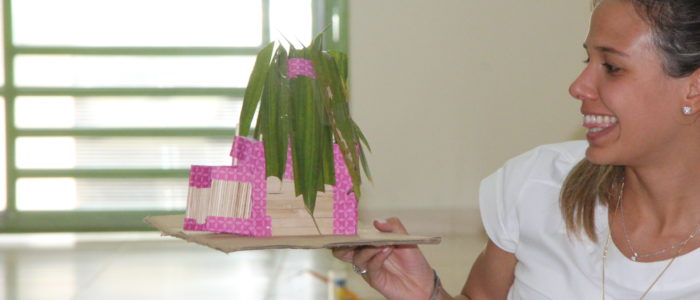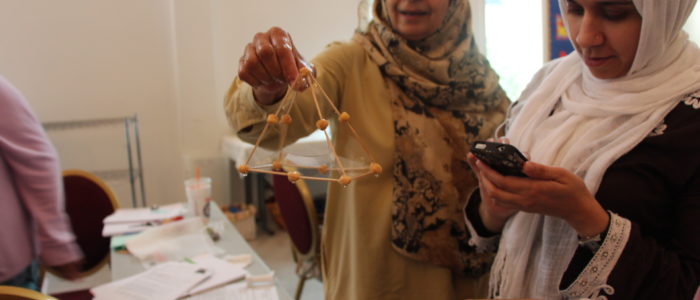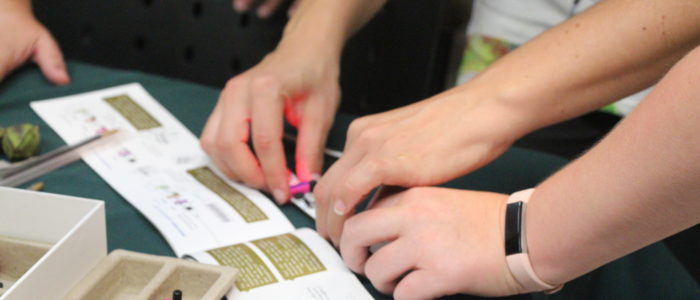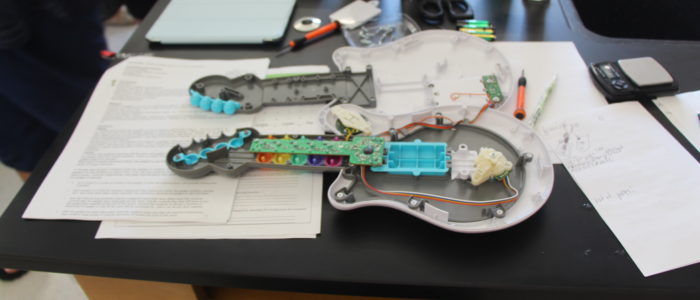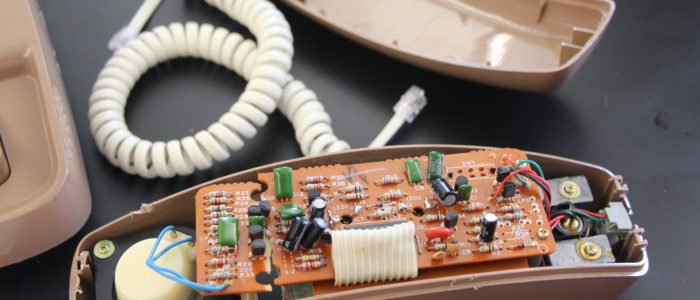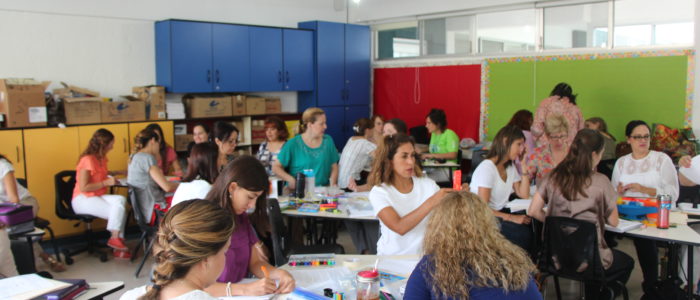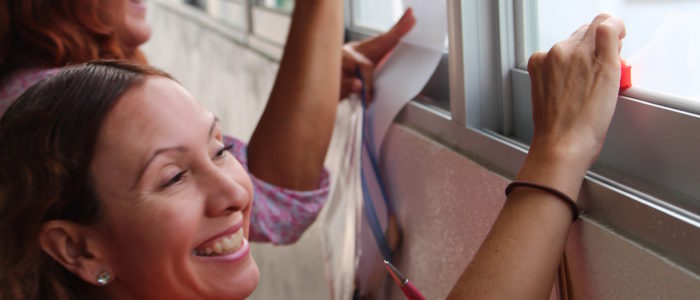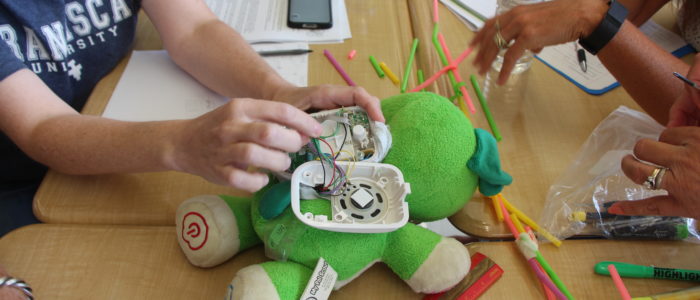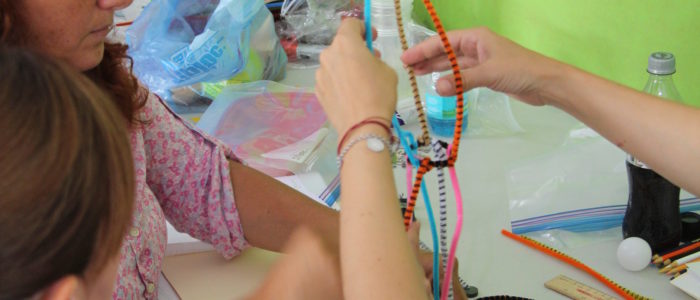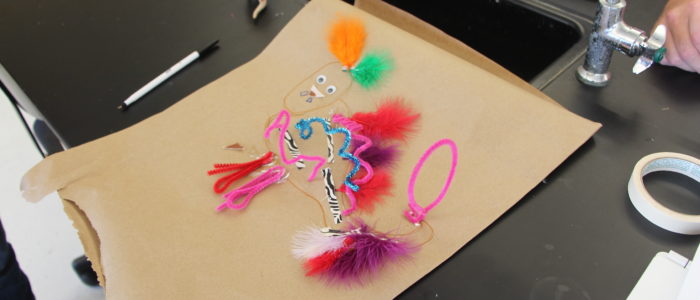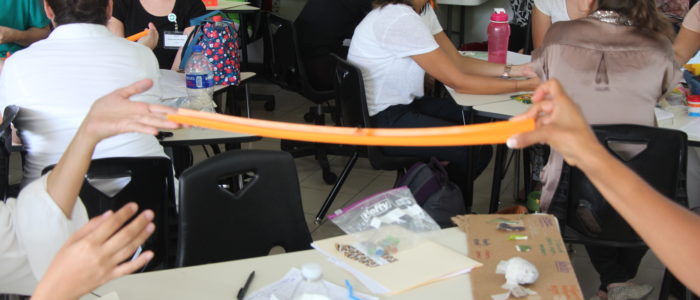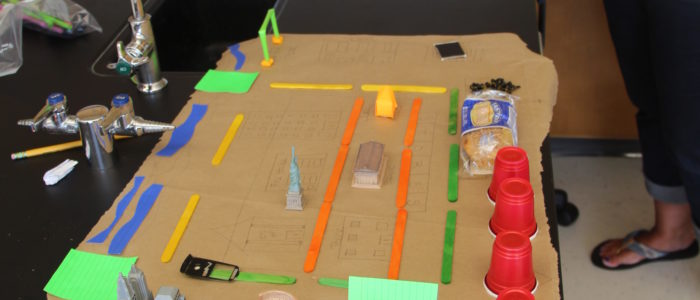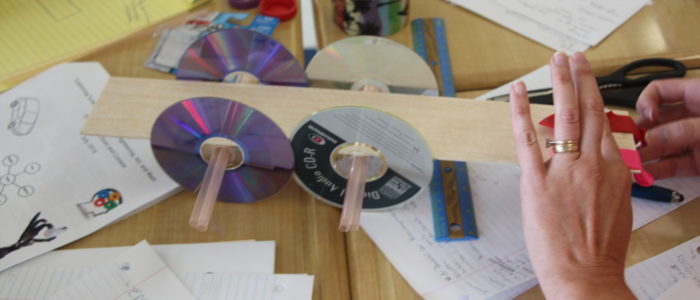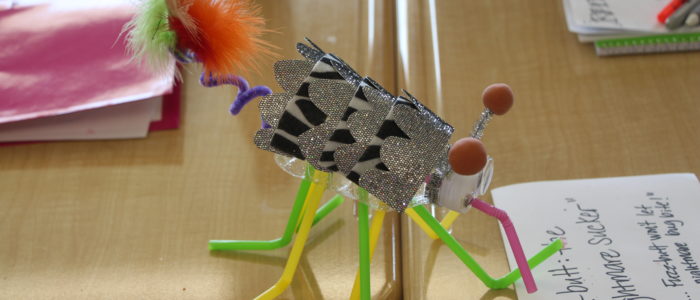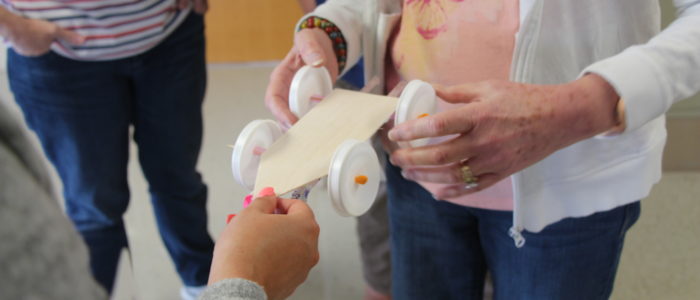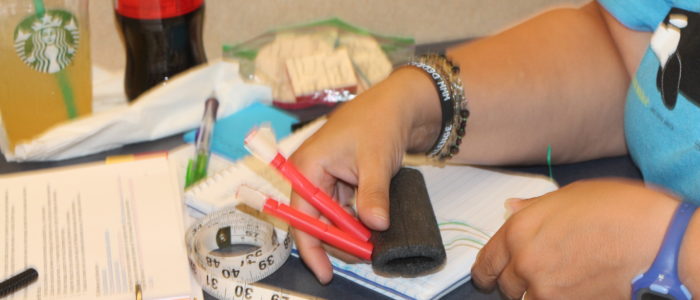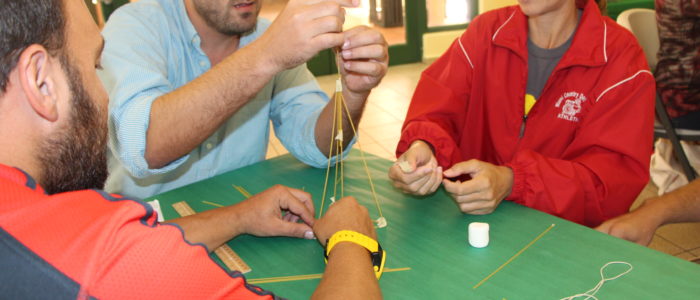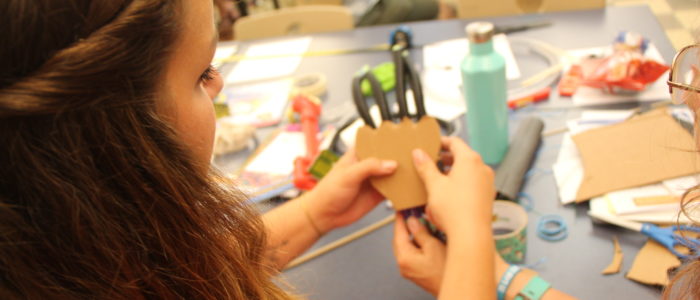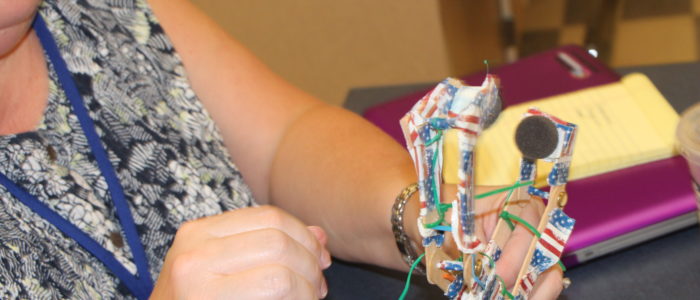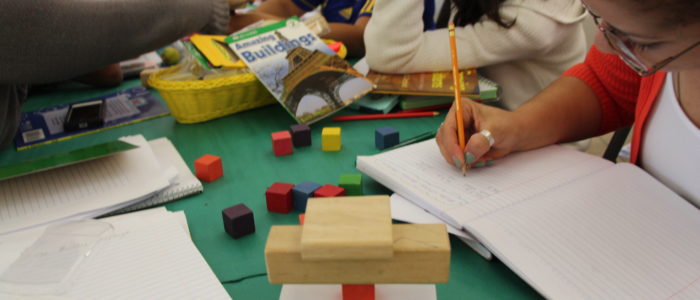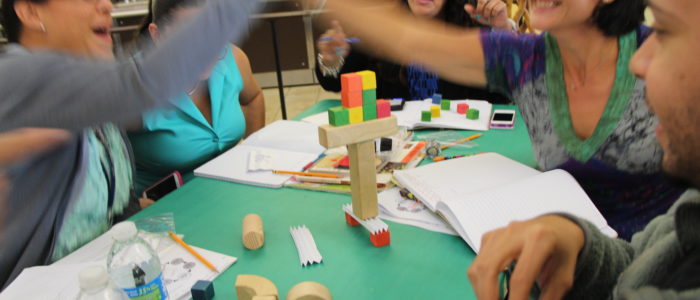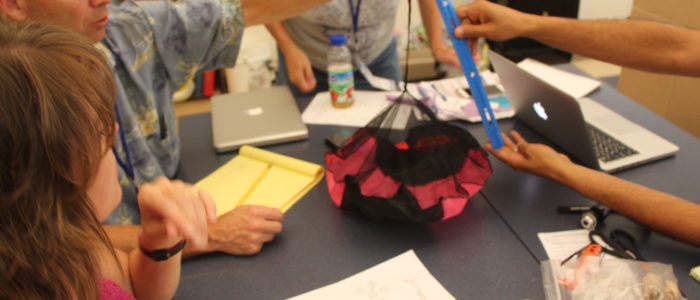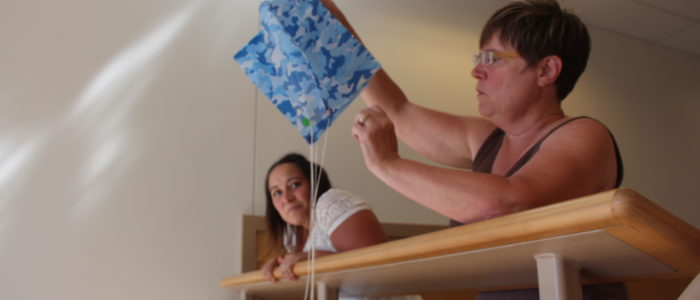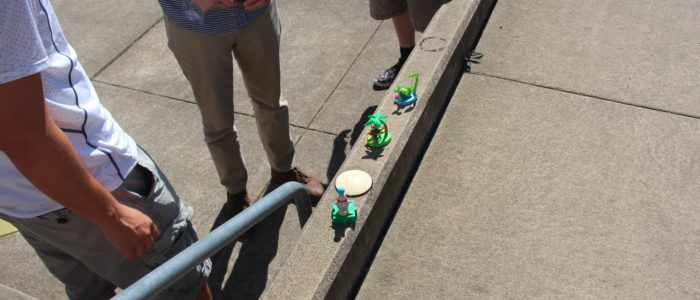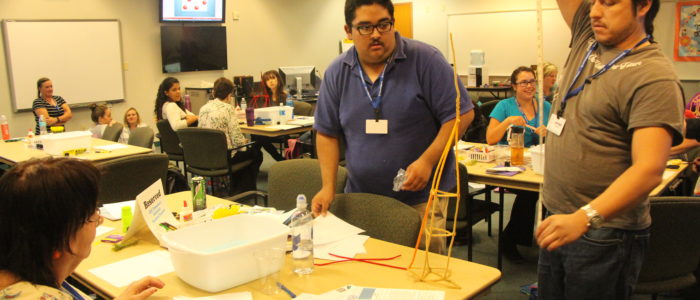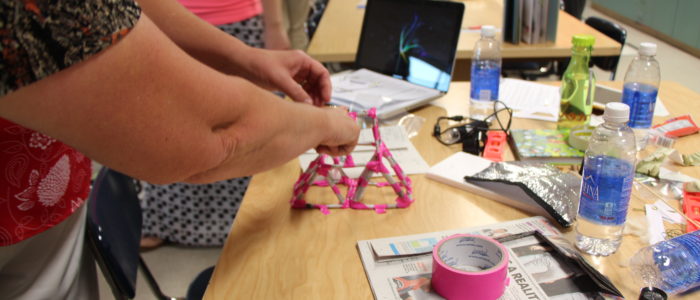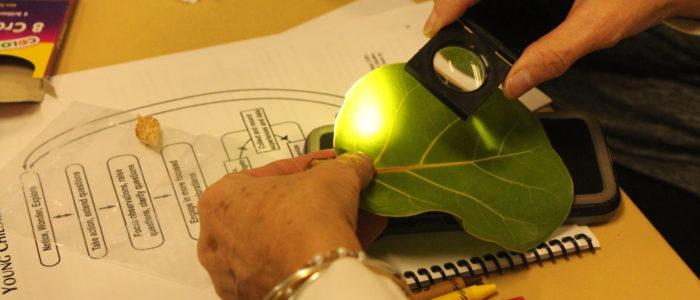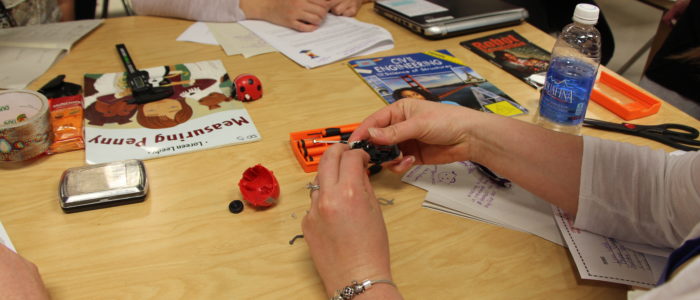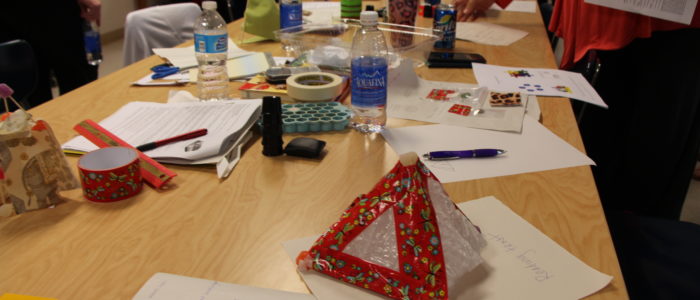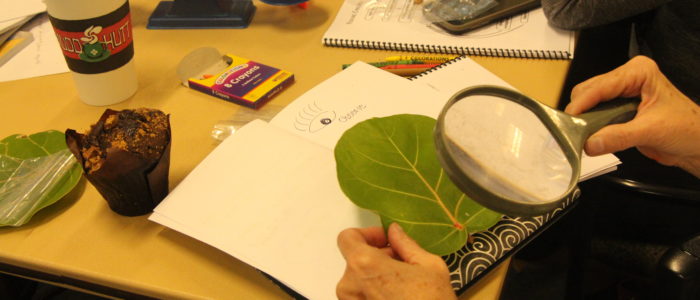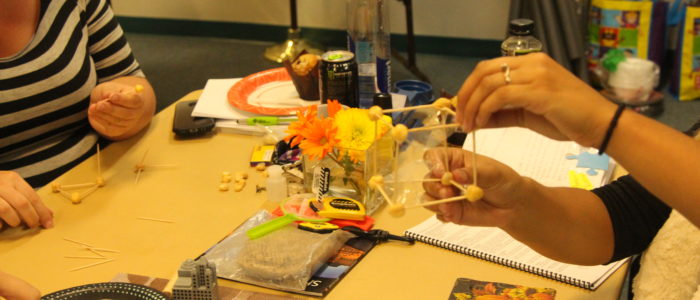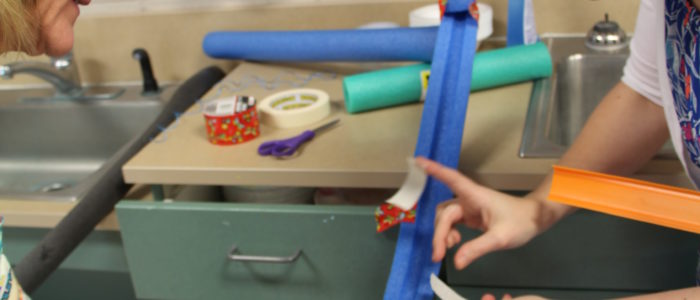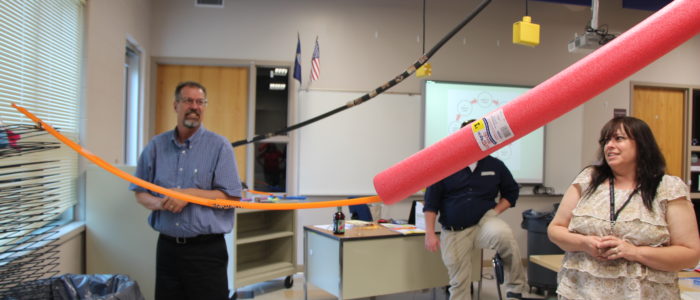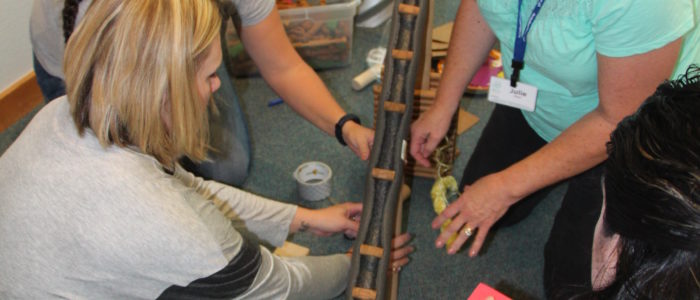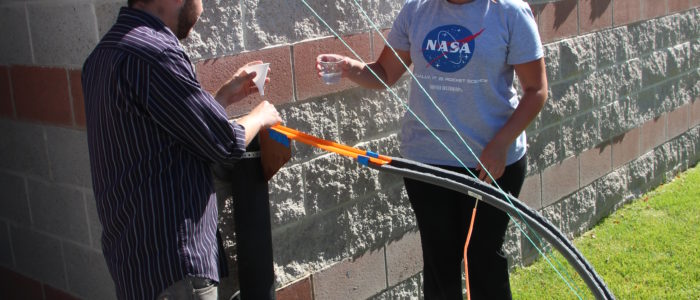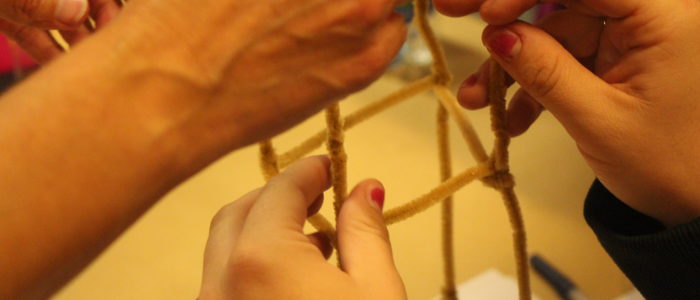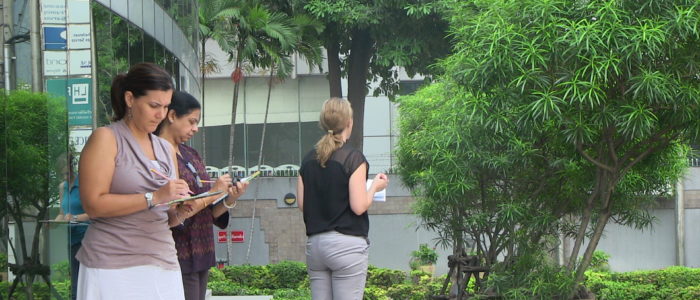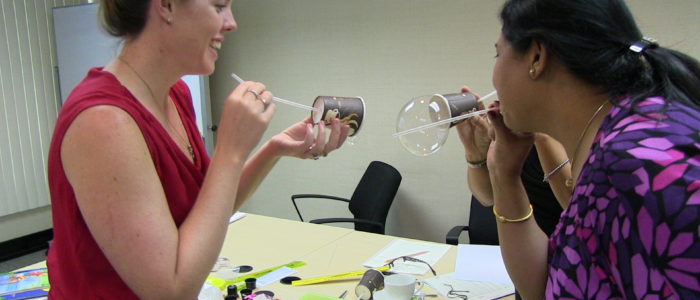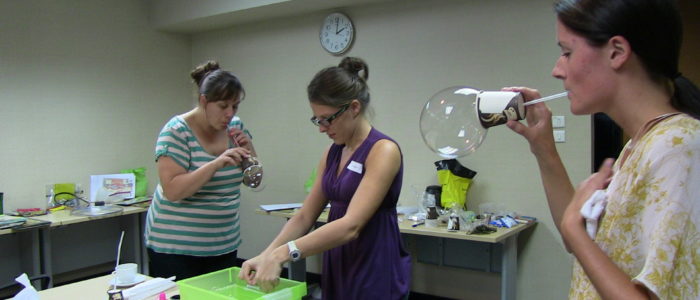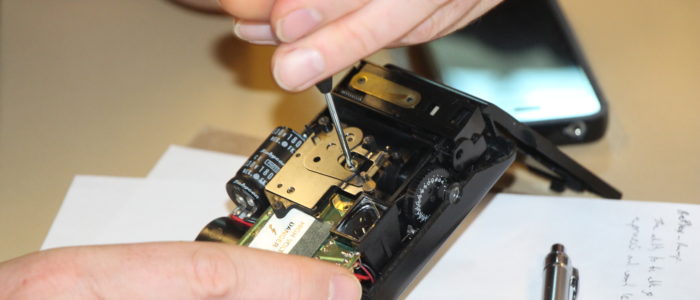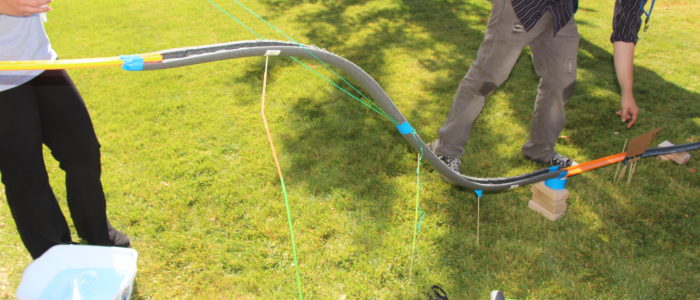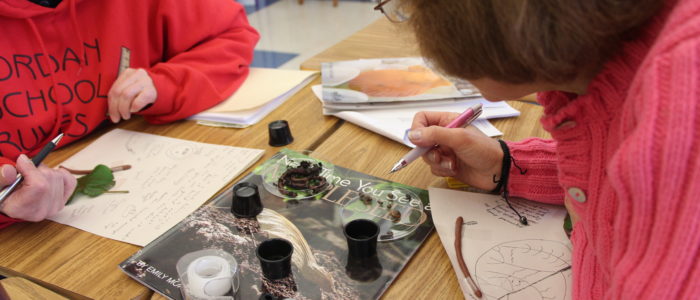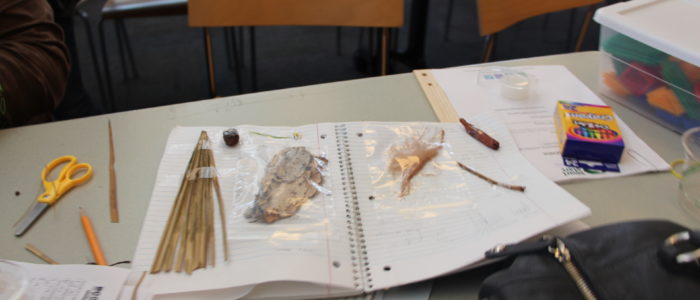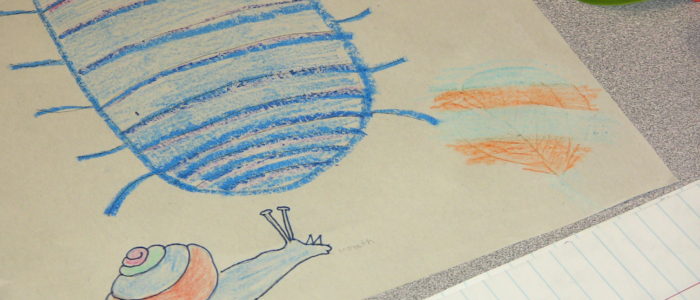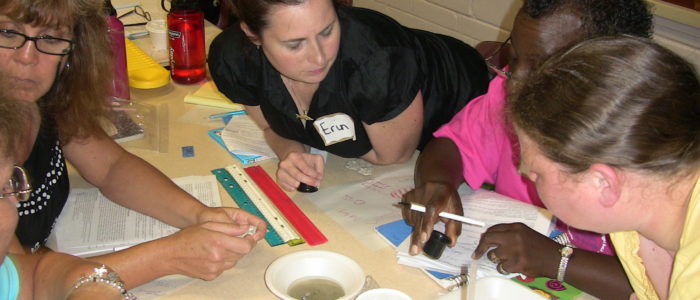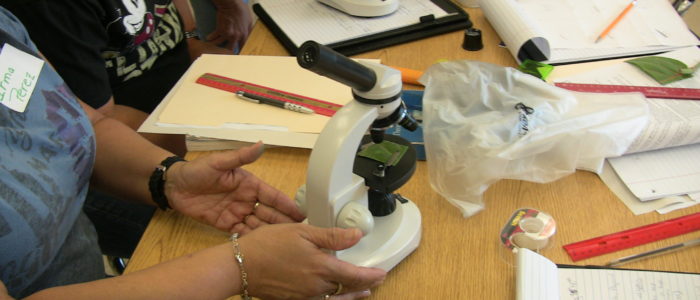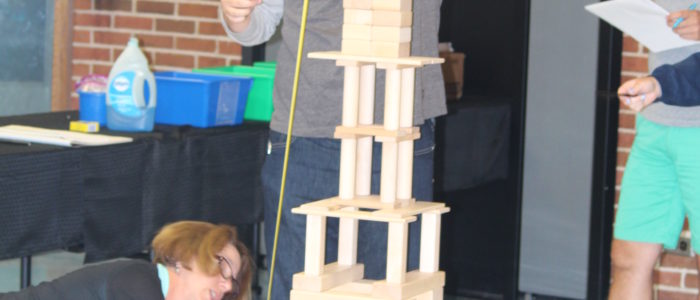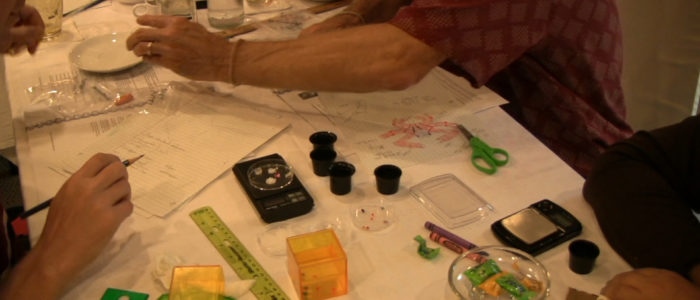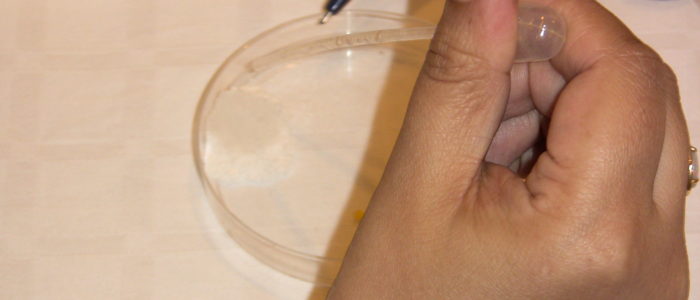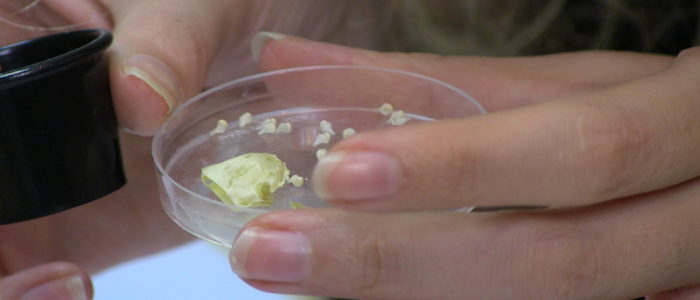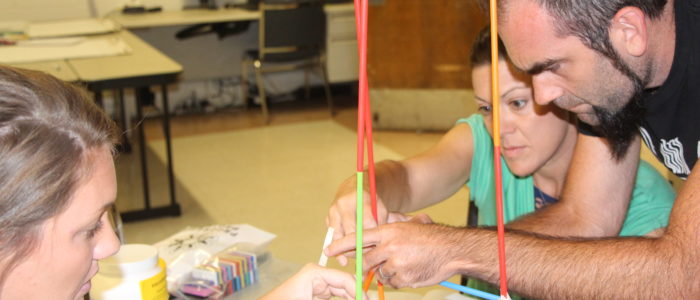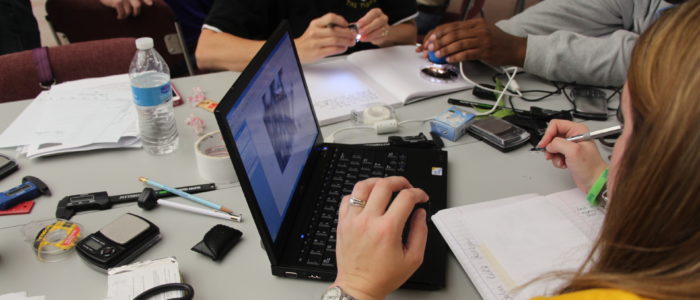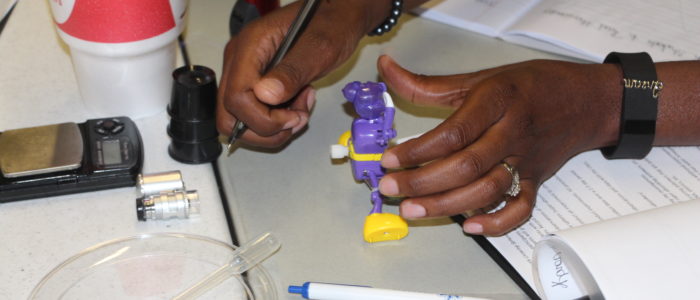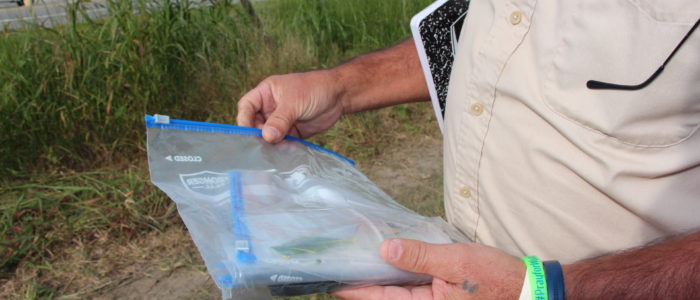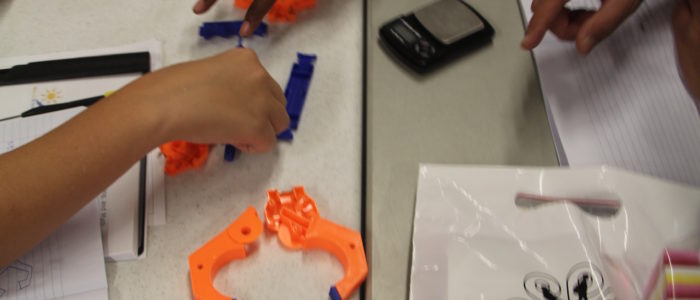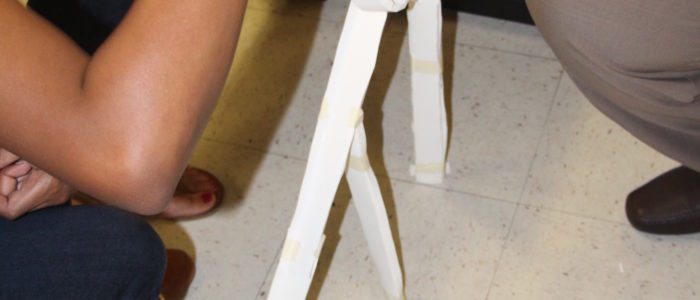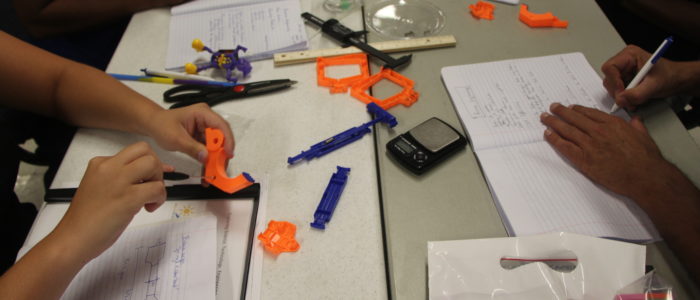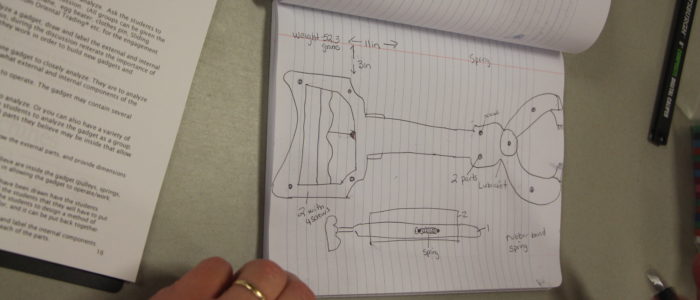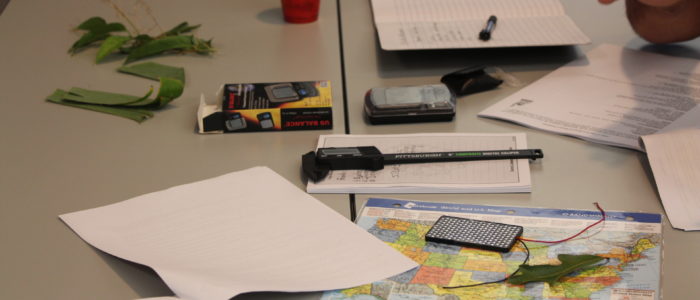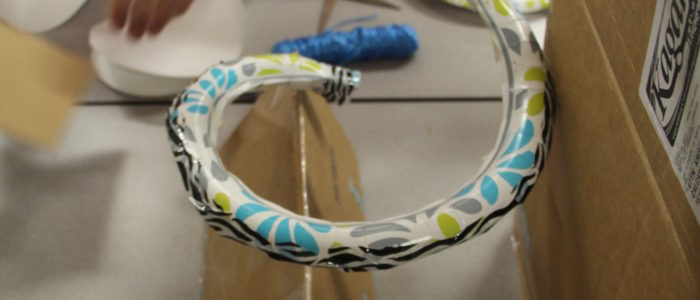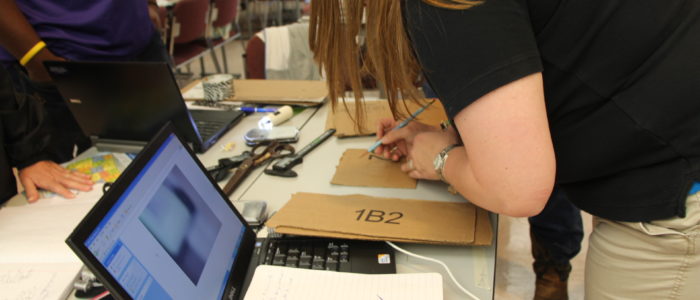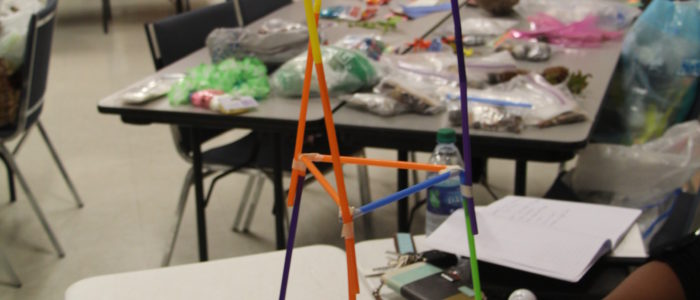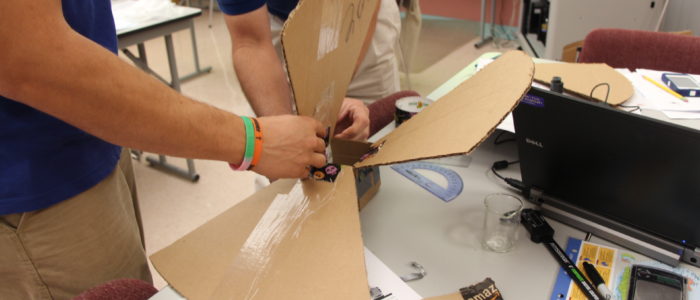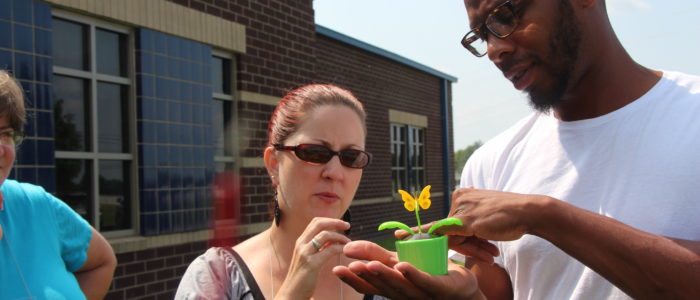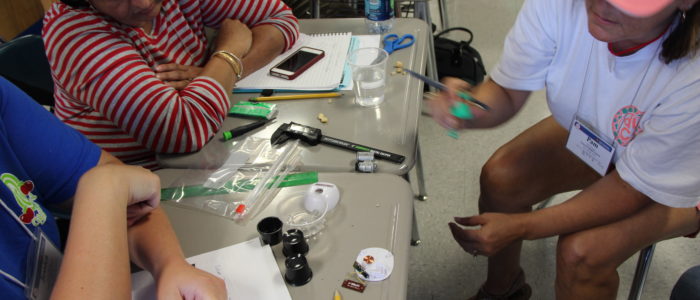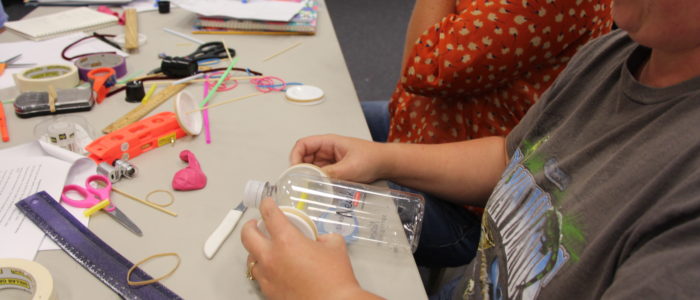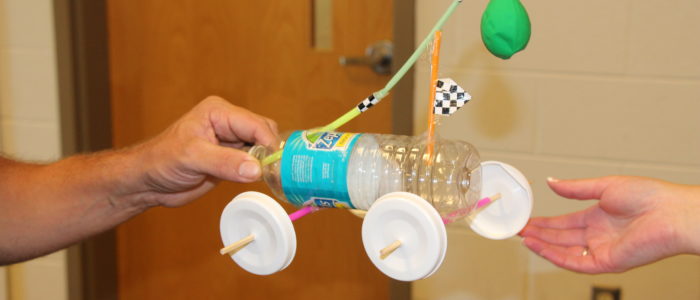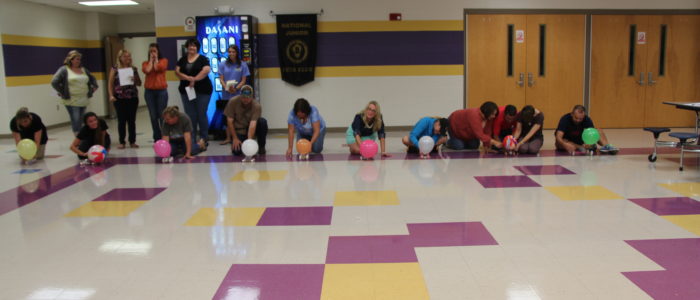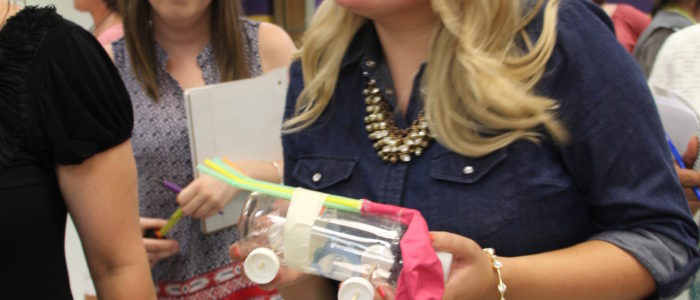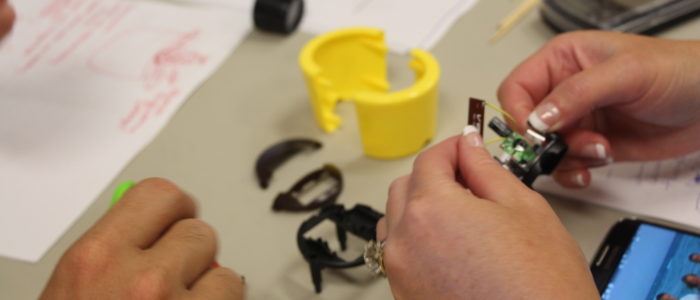There is a natural connection between the engineering design process and social and emotional learning core competencies. By incorporating science, technology, engineering, art and math (STEAM) practices, and engineering design challenges young children will have opportunities to develop and nurture SEL skills. When young children engineer and undertake engineering design challenges they learn how to empathize with others, make responsible decisions, regulate their emotions, share materials, collaborate, and communicate with one another. Check out research to support connecting STEM curriculum with social-emotional learning in early childhood here. During a recent teacher training session early childhood teachers were introduced to the foundational principles of STEAM education, and incorporating engineering design challenges that develop and nurture SEL in young children. Through engaging hands-on-minds-on experiences, participants explored how incorporating STEAM-based practices, explorations, and engineering challenges within the classroom and outdoor play spaces provide opportunities for young children to support and grow social and emotional learning skills. Materials used during the workshop were readily available and affordable materials and included recyclable materials. Additionally, participants were introduced to age-appropriate technology and tools that can be incorporated within STEAM explorations and centers. Check out some of the photos taken during the session below. For more information about professional staff development and interactive keynotes that I offer worldwide check out my training and keynote pages.
Introducing Screen-Free Coding to Young Children Teacher Training
I’ve developed a new STEM-based teacher training workshop for the 2020-2021 school year entitled “Screen-Free Coding for Young Children.” During this training, participants will be introduced to the importance of incorporating coding in early childhood. Participants will be introduced to a wide array of affordable screen-free coding gadgets and toys as well as floor games to use when introducing young children to the foundational principles of coding. Some of the gadgets include Botley the Coding Robot, Code-N-Go Mouse, Fisher-Price Code-A-Pillar, Bee-Bot, Ozobot, Coding Critters, The Learning Journey Coding Ladybug, and more. Participants will have the opportunity to use all the coding gadgets as they undertake coding and engineering challenges throughout the training. The one to two-day training has been designed for early childhood through grade 2. Coding is a basic literacy in the digital age, and it’s important for children to understand and be able to work with and understand the technology around them. Having children learn coding at a young age prepares them for the future. Coding helps children develop and strengthen all the 21st-century skills critical thinking, creativity, communication, and collaboration. The majority of the research has shown that young children should have minimal screen time prior to upper elementary years thus introducing young children to the foundational principles of coding using screen-free devices, games, and other manipulatives are effective teaching and learning strategies. Check out the following video of children and teachers I have worked with using a few screen-free coding gadgets. For more information about the STEM trainings I conduct or to schedule a training please complete the Contact Form found on the Contact Page.
University Lecturers and Professors of Early Childhood Education Attend STEM Teacher Training Course in Vietnam
I’m always grateful to travel to foreign countries to share my knowledge and passion for inquiry-based teaching and STEM education. In July of 2019, I had the privilege once again of traveling to Vietnam to provide two weeks of STEM teacher training courses for early childhood educators and university professors who specialize in early childhood education. One of the participants Nguyen Thi Thanh Ph.D., Rector of Hoa Sen MNTH wrote the following summary article of the STEM teacher training course. I thoroughly enjoyed meeting and working with Nguyen and her peers. During the training participants were introduced to inquiry-based teaching and learning, designing and implementing authentic and quality STEM lessons that are investigative based vs. activity-based. At the close of the session, participants were given the assignment of designing one STEM-based lesson which was reviewed by myself, as well as their peers. The university staff will share their acquired knowledge with their college students. I am anxiously awaiting to see how receptive their students will be in embracing STEM practices and content. Imagine, the impact of quality and authentic STEM learning experiences for the students of Vietnam. Thanks for writing the article Nguyen. Check out the summary article here.
Head Start Teachers Introduced to STEM Practices and Content
Over 60 Madera Head Start Teachers and administrators gathered for a day of STEM training. The room was filled with excitement, building blocks, a mountain of recycled materials to be used in engineering design challenges, low-cost technology and tools, STEM-based children’s literature, and more. Teachers were introduced to the foundational principles of STEM education including teaching via inquiry, designing lessons that engage and empower students, incorporating 21st-century skills within all STEM-based lessons, and incorporating real-world STEM challenges for young children. During the day-long training, teachers were introduced to using low-cost, meaningful technology mathematical and scientific tools, using the outdoors to teach STEM practices and content, building dimensional structures, patterns, shapes, ramp science, tinkering, block building, journaling, and incorporating STEM-based children’s literature within STEM explorations and centers. The teachers were engaged throughout the session, experiencing the beauty and power of STEM education like their young students. I am grateful to be providing ongoing STEM teacher training for Madera Head Start, it takes time and quality professional staff development experiences for educators to truly feel confident to implement STEM learning experiences within their own classrooms. I am excited to see what takes place during the 2019-2020 school year in Madera Head Start Classrooms, the teachers and administrators have truly embraced STEM education. Check out the following video below which gives you a birds-eye view of two different days of STEM training conducted for Madera Head Start Teachers. More ongoing training to take place in February of 2020.
STEM Education in Vietnam
In March I had the privilege of returning to Vietnam to continue providing on-going science, technology, engineering, and math (STEM) professional staff development to teachers and administrators of STEAMe Garten and Apax Leaders. Early childhood teachers of STEAMe Garten in Hanoi and Apax Leaders from both Hanoi and Ho Chi Minh City were introduced to STEM practices and content during five-day STEM teacher training institutes. Participants were introduced to the foundational principles of STEM education, best practices in STEM education, and STEM content. Participants took an active role in the training by working in small groups to conduct a wide-array of STEM-based investigations. Participants were introduced to inquiry-based teaching practices, incorporating journaling in the classroom, using STEM-based children’s literature within STEM lessons, and the engineering design process. A great deal of time was spent on providing opportunities for the participants to see what a quality STEM lesson entails, how it should be delivered, and creating a classroom learning environment that provides opportunities for students to develop and strengthen their 21st-century skills. STEAMe Garten, Vietnam is one of the first private educational corporations to incorporate STEM within early childhood and kindergarten classrooms. Additionally, Apax Vietnam is now offering ESL after school programs that teach English through STEM-based learning experiences. During the two-five day STEM, teacher training institutes participants were actively engaged in conducting “real-world” STEM-based lessons that could readily be incorporated within their early childhood through kindergarten classrooms, and ESL lessons. From designing and building marble roller coasters, to reverse engineering and coding teachers were immersed in exploring the power and beauty that STEM education has in transforming education. The following photos are a sampling of the two five-day institutes that took place in Hanoi and Ho Chi Minh City for STEAMe Garten and Apax Leaders.
Early Childhood Teachers Introduced to STEM Practices and Content
In early Spring I traveled to beautiful Sunnyside Washington to introduce early childhood teachers of Inspire Development Centers to STEM practices and content. During the two day STEM training 50 School Readiness Liaison and Early Head Start Teachers were introduced to foundational principles of STEM education and content appropriate for early childhood classrooms. The second day of training introduced the School Readiness Liaison Teachers to STEM explorations that can be incorporated in Family STEM programs and at home. Throughout the two-day training teachers were actively engaged in conducting inquiry-based STEM explorations from building with recycled materials to conducting STEM explorations outside, water science, incorporating affordable and meaningful technology, incorporating children’s literature within STEM lessons, journaling for preschoolers, and more. It was a great group of dedicated educators who will go onto share what they learned during the training with their students and their parents, making a positive impact on the children of the Migrant Workers and the community. Check out some of the photos taken during the two training.
Connecting STEM and Loose Parts
It’s been a very busy six months, and I’m finally, getting a chance to share what I’ve been up to. From conducting teacher training within the state of Florida, throughout the nation, Southeast Asia, and the Carribbean it has been a fulfilling and very rewarding past six months. In February I had the opportunity to travel to East St. Louis to provide professional staff development to early childhood educators at Southside Early Childhood Center. What an impressive school, staff, and administrators with a long history of providing quality childcare to children of families with low-income. During the training, early childhood teachers were introduced to the foundational principles of the Theory of Loose Parts. The Theory of Loose Parts was developed by Simon Nicholson in 1971. Loose parts are materials that can be moved, carried, combined, redesigned, lined up, and taken apart and put back together in multiple ways. The idea of ‘loose parts’ uses materials to empower a creative imagination. The more materials and individuals involved, the more ingenuity takes place. The theory of Loose Parts and foundational principles of STEM are a natural blend. Both promote exploration and creativity, are student-centered and encourage building and engineering. The teachers were immersed in exploring methods of connecting STEM practices and content with Loose Parts throughout the day-long training. Teachers were introduced to inquiry-based STEM explorations, journaling, the engineering design process, as well as having the opportunity to review a wide array of children’s literature that make great connections to STEM and loose parts. As always the teachers truly enjoyed themselves as they became students for the day exploring, investigating, and discovering the powerful impact STEM has on developing and strengthing 21st-century learning skills, as well as empowering and engaging the learner. Check out the following photos of the STEM and Loose Parts training.
Turkish Teachers Introduced to Best Practices in STEM Education
I had the pleasure of traveling to Turkey in January 2019 as the STEM Expert for an American Embassy Grant Program to provide a five-day Train the Trainer STEM Education Institute to middle school teachers. ORAV the hiring agency obtained a grant from an American Embassy Grants Program to provide a two + year project to provide sustainable STEM education to teachers and students throughout Turkey. The project was kicked off in January of 2019 when I provided an intensive five-day STEM Institute for 40 + lead trainers and administrators. During the five-day Train, the Trainer STEM Institute participants were introduced to best practices in STEM education which included inquiry-based teaching practices, developing and delivering investigative-based STEM lessons and learning experiences, 21st-century learning skills, engineering design process, journaling and connecting STEM across the disciplines. These lead trainers will provide STEM training and mentor over 250 teachers throughout Turkey over a five-month period. The 250 teachers trained will incorporate STEM learning experiences within their classrooms reaching thousands of students. I am truly grateful to have been selected to provide the foundational STEM training to the leader trainers of this project. These educators and administrators are extremely dedicated and motivated and have embraced the foundational principles of best practices in STEM education. I look forward to seeing the long-term benefits of this project on both the teachers and children of Turkey. The following video provides a sampling of the STEM learning experiences and discussions that took place during the five-day Train the Trainer STEM Institute in 2019.
Loose Parts and STEM Teacher Training Workshop
It’s been quite a while since I’ve shared summaries of my training sessions with my readers, I will try and catch up over the next couple of weeks with summaries. As always I’m so grateful to have the opportunity to share my passion and knowledge of science and STEM with educators throughout the world. It’s always nice when I am able to conduct teacher training sessions within the state of Florida, where I’m based out of. In December of 2018, I had the privilege of providing a Loose Parts and STEM training session at Forty Carrots in Sarasota, Florida. During the training, early childhood teachers were introduced to the foundational principles of the Theory of Loose Parts. The Theory of Loose Parts was developed by Simon Nicholson in 1971. Loose parts are materials that can be moved, carried, combined, redesigned, lined up, and taken apart and put back together in multiple ways. The idea of ‘loose parts’ uses materials to empower a creative imagination. The more materials and individuals involved, the more ingenuity takes place. The theory of Loose Parts and foundational principles of STEM are a natural blend. Both promote exploration and creativity, are student-centered and encourage building and engineering. During the training, teachers were immersed in exploring strategies for incorporating loose parts within STEM-based learning experiences. Teachers were actively engaged in using low-cost technology tools, building structures with loose parts, exploring states of matter, exploring the senses through loose parts, and more. Additionally, teachers were introduced to STEM-based themed children’s literature. The following photos provide a glimpse of what the training entailed. For more information about Loose Parts and STEM teacher training workshops please complete the inquiry form found on the Contact Page. [envira-gallery id=”1697″]
STEM Teacher Training Course in Vietnam
In early Fall I was contacted by eGroup Education Corporation Joint Stock Company located in Hanoi, Vietnam to conduct an intensive introductory STEM teacher training course for STEAMe Garten and Apax English Teachers. STEAMe GARTEN is part of Egroup Education Group which is one of the first preschools to introduce STEM education methods to preschool programs in Vietnam. For five days 40 STEAMe GARTEN and 10 Apax English Teachers were immersed in delving deep into what a quality STEM education program looks like, observing best practices in STEM teaching practices such as inquiry, student-driven classroom, and designing STEM-based lessons and experiences that engage and empower each individual student. The five day STEM teacher training course started off with introducing the participants to inquiry-based teaching practices, 21st-century learning skills, engineering design process, reflective journaling, and incorporating children’s literature. The first STEM-based investigation I introduced the teachers to was exploring matter of all kinds, in the engineering world, this is called materials science. So much of STEM learning is based on conducting engineering challenges whether it’s building a prototype of a bridge, house, or roller coaster ramp. It’s imperative that teachers give students the opportunity to explore the materials they are expected to use or have the option of using, as well as introducing students to the newest materials that have been developed. During the STEM-based matter lessons teachers compared and contrasted physical characteristics of a wide array of common household materials such as cardboard, cement bricks, wood, Styrofoam and more, as well as unique materials such as super-absorbing polymers, polymers, and Oobleck. After participants became acquainted with the characteristics of building materials and unique types of matter we progressed on to study patterns and shapes and why patterns and shapes are so important to all the STEM disciplines. Participants compared structural integrity of triangles vs. squares, they created 3-dimensional structures with toothpicks and garbanzo beans and then dipped them into a soap solution to observe faces, vertices and edges and more. We also made connections to geometry and architecture. Participants were given the challenge of designing and creating a dimensional structure of their choice within a limited time frame. They were only allowed to use cardboard, tape, string, and decorative materials. These type of engineering challenges provide plenty of opportunities to strengthen and develop 21st-century learning skills (creativity, critical thinking, communication, and collaboration). It was amazing to see all the different type of structures that were created. A gallery walk was undertaken to observe all the structures, and each group was also asked to provide an oral presentation of their building experience and structure. We then moved onto exploring mechanical, electrical and systems engineering via analyzing and taking apart broken household gadgets and toys. This is perhaps one of the most authentic STEM learning experiences a student of any age can undertake to truly understand what engineering is all about. Participants were separated into small working groups where they spent several hours analyzing, deconstructing and organizing internal and external components that made up their gadget. At the completion of the deconstructing engineering challenge a gallery walk was had, and each group gave a presentation to the class about their experience deconstructing the gadget. The teachers shared that from having had this experience they would no longer throw away “outdated or broken appliances or toys” but instead bring them to their classrooms for the students to deconstruct. Depending on the grade level of the students, this engineering experience can be taken to the next level by having students try and fix the gadget, reconstruct the gadget, create a new gadget from the components, or create art from the components. The last of the engineering challenges the teachers undertook was to design and create a marble roller coaster which had to have a minimum of one turn and one loop, using limited supplies which included paper tubes, insulation tubes, cardboard, straws, blocks, tape, string, and decorative materials. Teachers were given a limited amount of time to undertake the challenge. At the completion of the building, a gallery walk of the roller coasters was undertaken where group members demonstrated how their roller coaster worked and discussed the entire learning experience with their peers. As always designing and […]
